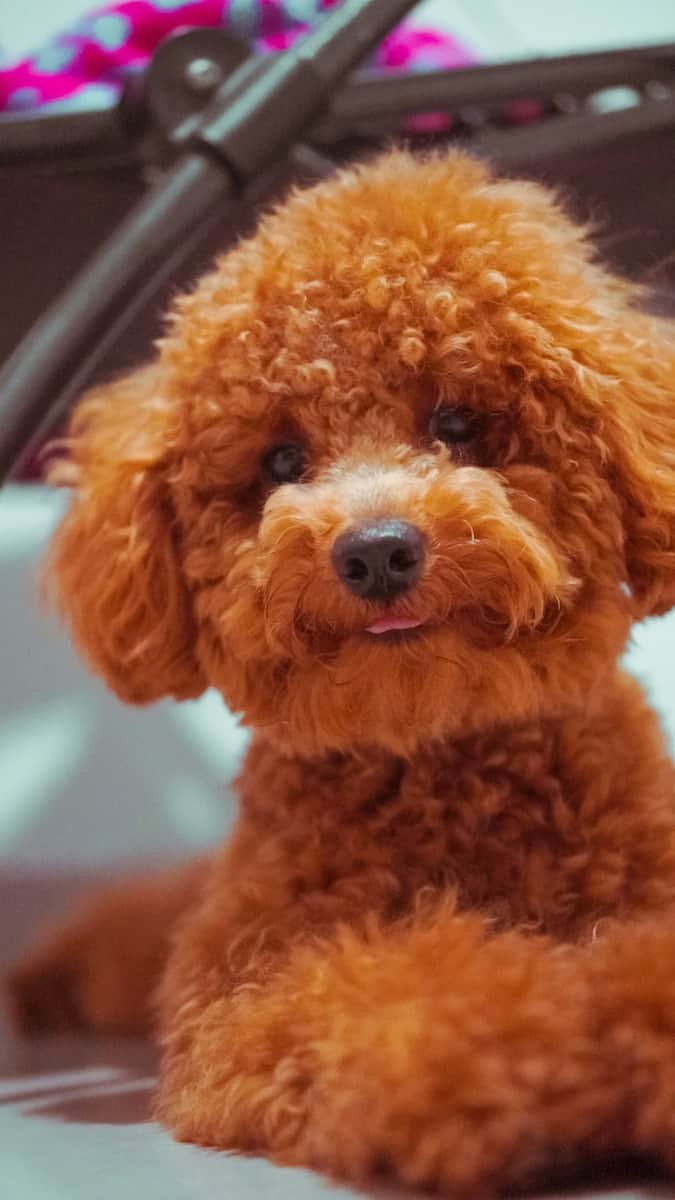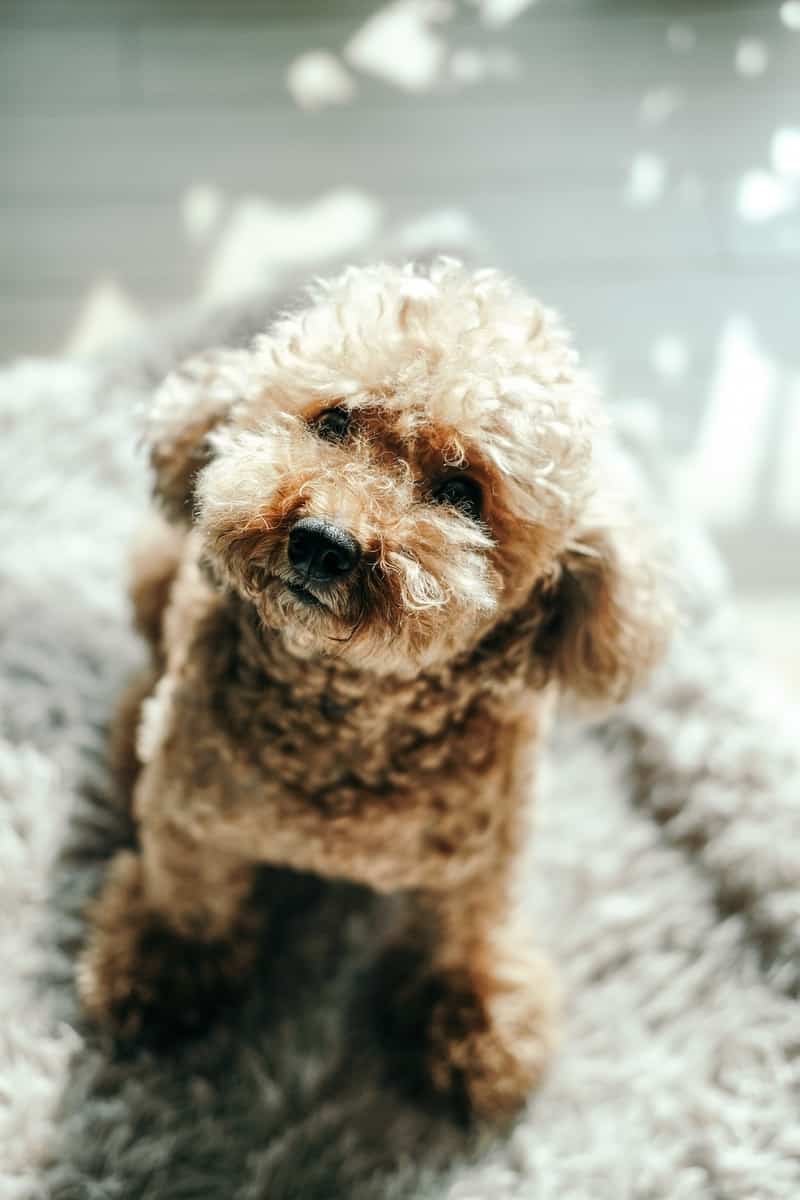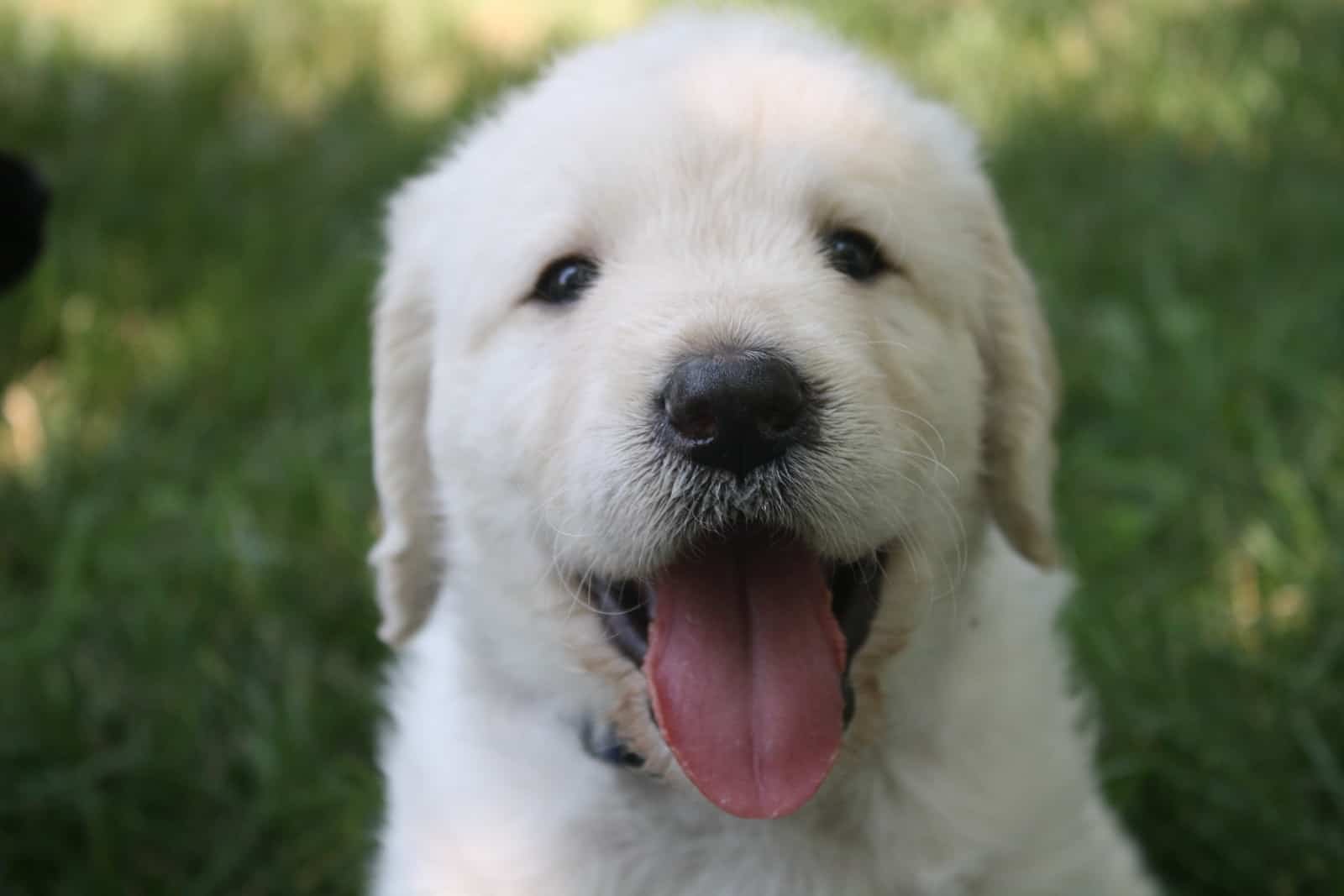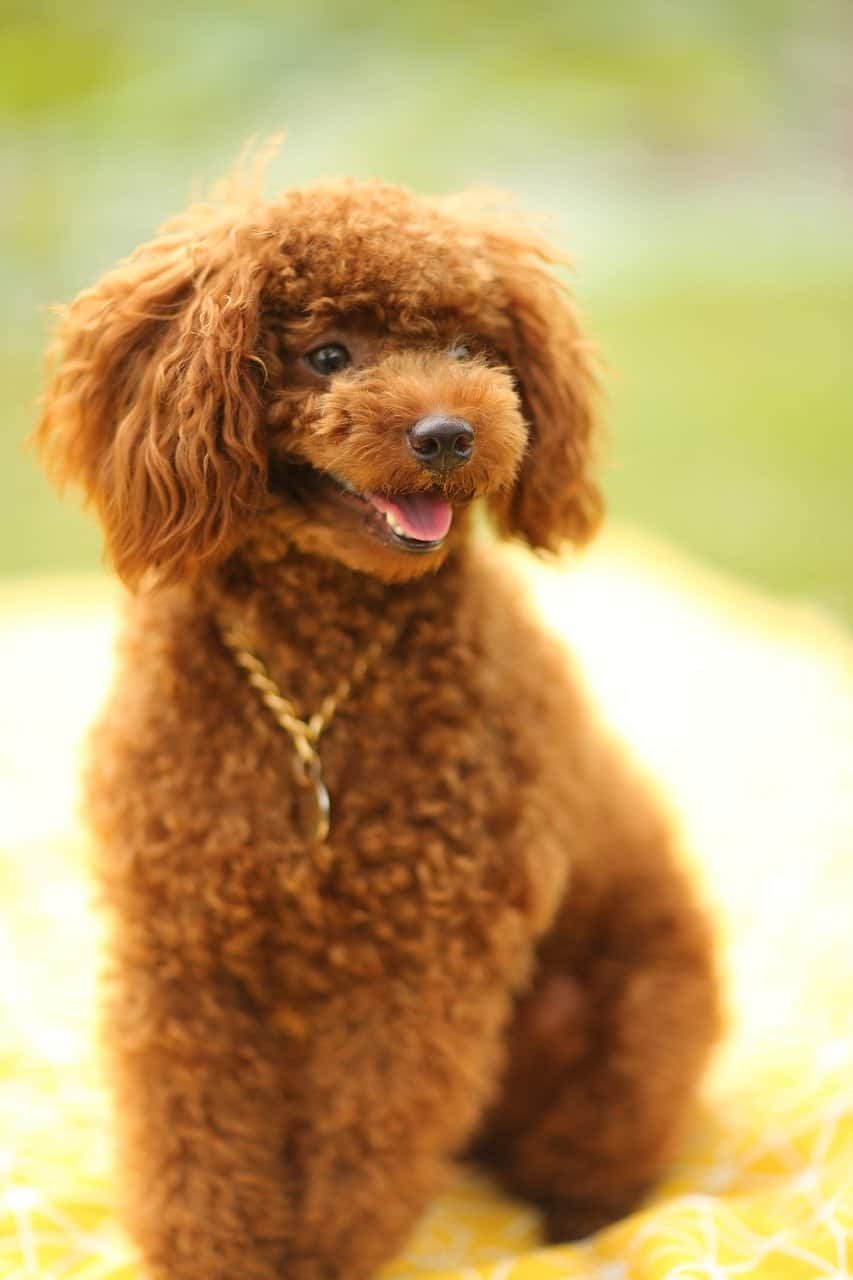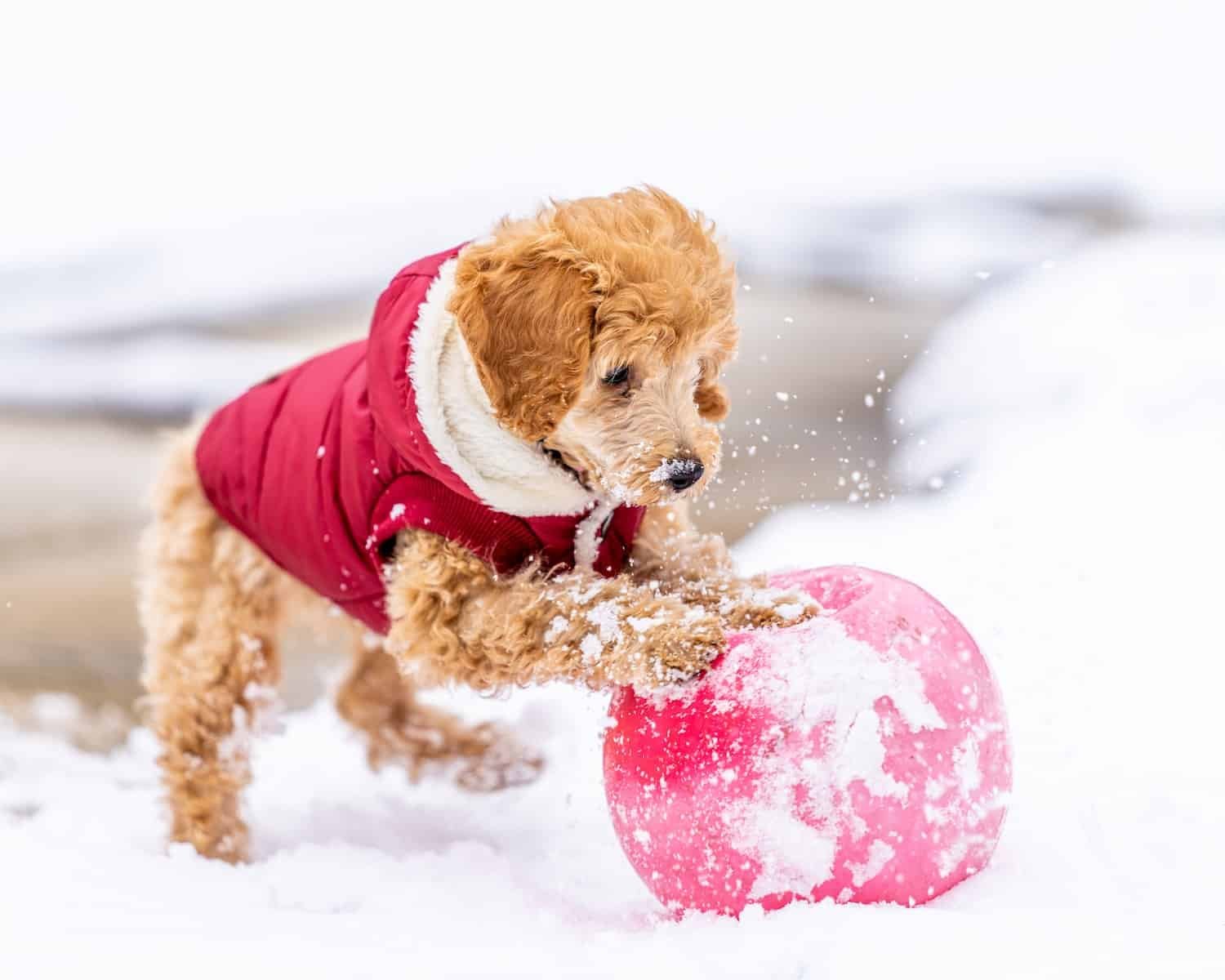
Are you considering getting a red poodle as your next furry companion? Or are you simply curious about this unique breed? Look no further! In this article, we’ll cover everything you might be curious about when it comes to red poodles.
First off, you might be wondering what makes a red poodle different from other poodles. The answer is in the name – their coat color! Red poodles have a beautiful, rich, and deep red fur that sets them apart from the more common white, black, or brown poodles. But there’s more to them than just their coat color.
Red poodles are also known for their intelligence, playfulness, and loyalty. They make great family pets and are often used as therapy dogs due to their gentle nature. If you’re considering adding a red poodle to your family, read on to learn more about this fascinating breed.
What is a Red Poodle?
Red Poodles are a highly sought after breed known for their stunning coloring, intelligence, and loyalty. Unlike Apricot Poodles that have a golden hue, Red Poodles have a deep copper-red coat that can range from a light strawberry blonde to a rich mahogany shade. Red coloring in poodles is not dependent on the amount of exposure to UV light but rather is a genetic trait passed down from parents to offsprings. In this article, we will explore more about the Red Poodle breed, their history, physical characteristics, temperament, and health.
History of the Red Poodle
The history of the Red Poodle dates back to the development of the apricot colored Poodle. Through selective breeding, breeders worked to establish the Red Poodle as a separate color variety. Ilse Konig, a famous breeder, played a significant role in breeding red Miniature Poodles, as well as Moyan and Standard Poodles.
Breeding for color presented challenges for red Poodle breeders. They had to balance the desire for a beautiful color with the importance of maintaining other traits such as temperament, coat quality, and overall health. Nevertheless, well-bred Poodles with a distinctive red coat are now recognized and highly sought after by many dog lovers around the world.
By carefully selecting breeding pairs with the desired traits, breeders were able to establish the Red Poodle as a distinct variety without compromising other important breed features. Today, Red Poodles are recognized for their intelligence, athleticism, and affectionate personalities, making them an ideal breed for families.
Appearance
When it comes to dogs, appearance is an important feature that varies across breeds. The Red Poodle is no different. This breed has a distinctive red coat that many dog lovers admire. However, breeding for color affects not just the coat but other physical features as well. As an expert editor, I have ensured that this piece strikes a balance between providing accurate information and presenting it in an accessible way. In this post, we will delve into the physical appearance of the Red Poodle, exploring everything from size to coat characteristics.
Physical Characteristics of the Red Poodle
The Red Poodle is a popular breed known for their unique physical traits. These dogs come in three different sizes – toy, miniature, and standard. The toy Red Poodle stands up to 10 inches and weighs around 6 pounds while the miniature Red Poodle is up to 15 inches and weighs around 15 pounds. The standard Red Poodle is over 15 inches and weighs between 45 and 70 pounds.
One of the most distinctive characteristics of the breed is their curly, single coat that ranges in color from light to dark red. They shed minimally and are considered hypoallergenic, making them a great choice for people with allergies. Their dark, expressive eyes give them a charming look and enhance their alertness.
Red Poodles can live for 12-15 years on average if given proper care and nutrition. They require regular exercise and mental stimulation to stay healthy and happy. With their unique physical characteristics and low-shedding coat, it’s no wonder the Red Poodle is a beloved breed among dog owners.
Shedding and Grooming Requirements
The Red Poodle is a charming breed with a distinctive appearance and hypoallergenic qualities that make them an excellent choice for those with allergies. However, they require regular grooming and maintenance to maintain their full, curly coats.
The Red Poodle requires daily brushing to prevent matting and tangling of their coat. Their curly, single coat ranges from light to dark red, and they shed minimally. While they are hypoallergenic and don’t shed, they require frequent bathing, trimming, and professional grooming to maintain their curly coat.
Tips and Considerations for Skin Care:
To keep the Red Poodle’s coat in good condition, regular baths with a dog-specific shampoo and conditioner are required to prevent skin irritations and infections. Additionally, keeping up with regular grooming appointments with a professional groomer is essential to maintain their coat’s square appearance and prevent overgrowth.
If you are looking for a low-shedding, hypoallergenic breed with a beautiful coat, the Red Poodle may be a perfect fit for you. However, it’s essential to understand the shedding and grooming requirements and commit to daily brushing, frequent bathing, trimming, and professional grooming to keep them healthy, happy, and looking their best.
Common Coat Colors in the Red Poodle Breed
The Red Poodle breed is known for its charming appearance and hypoallergenic qualities. One of the distinctive features of this breed is its versatile coat, which comes in a wide range of colors. The most common coat colors found in Red Poodles are red, black, chocolate, and apricot. Light red and cream colors are also increasingly popular in this breed.
One notable aspect of a Red Poodle’s coat color is that it can change throughout their life. It is impossible to predict how a pup’s coat will change as they grow and age. For example, a Red Poodle with a deep red coat may develop a lighter coat as they grow. Many factors, such as the dog’s age, diet, and exposure to sunlight, can influence the color of their coat.
Owners of Red Poodles should be aware of the potential for color changes and embrace this exciting aspect of their pet’s appearance. This flexibility in coat color adds to the unique character of the breed, making it a popular choice for those looking for a one-of-a-kind pet.
Temperament & Activity Level
When it comes to choosing a dog breed, temperament and activity level are crucial factors to consider. A dog’s energy level, sociability, and trainability are among the primary components of their temperament. In this article, we’ll dive into the traits that make red poodles a great choice for potential pet owners in terms of their playful and sociable personalities. We’ll also explore their energy levels, which make them an ideal fit for households with active lifestyles.
Red poodles are affectionate, energetic, and lively dogs that excel in social situations. They adore human interactions and are exceptional with children, which makes them perfect for households with kids. These dogs are also highly intelligent, making them quick learners in obedience training. They’re friendly toward strangers but can be a little wary of them, which makes them great watchdogs. Red poodles are not susceptible to anxiety and readily adapt to varied changes in their environment, making them excellent travel companions
In terms of energy levels, red poodles are naturally responsive and thrive in active households; this breed is ideal for owners who have a more energetic lifestyle. Regular walks and play times will keep them stimulated and happy. They require a moderate amount of exercise, which can be achieved through daily walks or extended playtimes. Red poodles may become bored or anxious if left alone for too long. However, with enough mental stimulation and exercise, such as puzzle games and interactive toys, they tend to thrive and remain happy.
Red poodles are a great fit for owners who seek an affectionate, playful and sociable companion with a moderate energy level. They are adaptable, trainable, and excel in social settings, which makes them perfect for households with children and pet dogs. These beautiful dogs bring pleasure and joy into the homes of many households worldwide. Their charming and adorable personalities, along with their easy-grooming maintenance, make them a top choice for anyone to add vitality and excitement into their daily routines.
Personality Traits of the Red Poodle
The Red Poodle breed possesses a vibrant and friendly disposition, making them excellent companions for families with children. They’re highly intelligent, independent, and are quick learners in obedience training. With an innate playful nature, Red Poodles thrive in active households and require daily exercise to maintain their health.
Mental stimulation is also essential, as boredom or anxiety can arise with inadequate stimulation. These dogs adapt easily to various surroundings, making them ideal travel companions. With an average height of about 15 inches, Red Poodles come in a gorgeous range of coat colors, including apricot, light red, chocolate, and black. In conclusion, Red Poodles are loyal and loving pets with wonderful personalities, highly adaptable to various living environments, and perfect for families seeking an active and engaged companion.
Mental Stimulation for the Red Poodle
Red Poodles are known for their intelligence and high energy levels. These adorable dogs require mental stimulation to keep them happy and healthy. Boredom can lead to destructive behavior and anxiety, so it’s important to keep them occupied. Here are some activities that can challenge their intelligence and keep them mentally engaged.
Puzzle toys: Interactive toys like puzzle feeders or treat-dispensing balls can provide a fun challenge for Red Poodles. These toys require them to use their problem-solving skills to access the rewards inside.
Obedience training: Red Poodles are a breed that loves to learn, so obedience training can be an excellent mental workout for them. Basic commands like “sit,” “stay,” and “come” are just the beginning. Advanced training can include agility courses, which require focus, discipline, and quick thinking.
Interactive play: Interactive playtime with their owner can be a great way to keep Red Poodles mentally stimulated. Games like fetch and hide-and-seek can help them burn off energy while also improving their cognitive abilities.
Scent work: Red Poodles have an excellent sense of smell, so scent work can be a challenging and rewarding activity for them. Activities like finding hidden treats or toys using their sense of smell can provide a fun challenge while also boosting their confidence and mental acuity.
By providing these mental challenges and activities, owners can help Red Poodles reach their full potential, both physically and mentally. They are a highly intelligent breed that thrives on mental stimulation, so investing time and effort into their mental wellbeing will pay off in countless ways.
Activity Requirements for the Red Poodle
Red Poodles are a breed of dog that require daily exercise and mental stimulation. As a medium-sized breed, they have moderate energy levels and a high need for mental stimulation. Providing them with plenty of exercise and activities can ensure that they lead a healthy and happy life.
Exercise Requirements:
Red Poodles need daily exercise to stay healthy, physically fit, and mentally stimulated. A daily walk of at least 20-30 minutes is necessary to keep them active. This can be followed by a game of fetch or a run in a fenced area. Due to their moderate activity level, they also benefit from activities like hiking, jogging, and swimming.
Mental Stimulation Requirements:
In addition to physical exercise, Red Poodles require mental stimulation to stay happy and healthy. They are intelligent and love to learn, so they benefit from obedience training and advanced activities like agility courses. They also enjoy activities like puzzle toys, interactive play, and scent work, which challenge their problem-solving abilities and engage their sense of smell.
Activities that keep Red Poodles physically active and mentally stimulated are essential for their well-being. As an energy and barkless breed, they require regular exercise and playtime to maintain good health, happiness, and behavior. With the right combination of exercise and mental stimulation, Red Poodles can thrive and enjoy a long, fulfilling life.
Health Issues & Concerns
As much as we adore the companionship of canines, they too are prone to health issues that can affect their quality of life. A Red Poodle, for instance, requires daily exercise and mental stimulation to stay healthy. However, their well-being further depends on the owner’s aptitude in recognizing the signs that suggest something is amiss. This post aims to guide the reader through some of the health issues that Red Poodles commonly face so that owners may establish a proactive approach to their care.
Health Problems Common to the Red Poodle
Red poodles are a beloved breed known for their intelligence, playfulness, and loyalty. Additionally, they are considered one of the healthier breeds out there, but like all dogs, they are still prone to a few health problems. As a responsible pet owner, it is essential to know about the common health issues that can affect the breed. In this article, we will discuss health problems common to the Red Poodle, how they can impact the breed’s overall health and lifestyle, and the signs and symptoms to look out for.
Despite being relatively healthy, Red Poodles can suffer from a few health complications. The most common being hip dysplasia, cataracts, and allergies. Hip dysplasia is a genetic condition that affects the hip joint, leading to arthritis and loss of function. Cataracts are a clouding of the eye’s lens, resulting in impaired vision and blindness. Allergies, especially food allergies, can lead to skin rashes, inflammation, and infections.
Impact on their Overall Health and Lifestyle:
These health problems can impact the Red Poodle’s overall lifestyle and health severely. Hip dysplasia can cause mobility issues, leading to a less active lifestyle, weight gain, and even depression. Cataracts can impair their vision, leading to accidents or trouble performing everyday tasks. Allergies can cause discomfort, irritability, and interfere with their quality of life.
Signs and Symptoms:
Symptoms of hip dysplasia include difficulty walking, a decreased range of motion, stiffness after exercise, or a popping sound in the affected joint. Signs of cataracts include a blue, white, or cloudy appearance in the eyes. Symptoms of allergies include constant licking and scratching, hair loss, and skin rash or infections.
Being aware of the health problems common to the Red Poodle and their symptoms can help pet owners detect potential issues early on and provide appropriate treatment. With proper care and timely intervention, Red Poodles can live a long and healthy life, free of preventable health problems.
Retinal Atrophy in the Red Poodle Breed
The Red Poodle breed is known for its intelligence, loyalty, and playfulness. However, like all dogs, they are prone to certain health problems. One of these problems is progressive retinal atrophy (PRA), a genetic condition that causes the gradual degeneration of photoreceptor cells that allow dogs to see. Over time, PRA can lead to complete blindness in affected dogs. Unfortunately, there is currently no effective treatment for PRA in dogs.
PRA is an inherited disease that affects both the Red Poodle and other dog breeds. While the condition can manifest at different rates and times, it is responsible for a significant amount of blindness in dogs over time. As the photoreceptor cells in the retina degenerate, affected dogs experience a gradual loss of vision that can lead to total blindness.
The lack of effective treatments for PRA in dogs can be devastating for Red Poodle owners. Catching the condition early through regular eye exams is vital to managing its progression. Breeders can also help reduce the incidence of PRA by screening their dogs and engaging in responsible breeding practices. Despite the challenges presented by this inherited disease, Red Poodle owners can take proactive steps to help preserve the vision and well-being of their beloved pets in the face of PRA.
Screening Tests Recommended for Well-Bred Dogs
Red Poodles, like other dog breeds, are prone to certain health issues that can potentially lead to serious problems. As a result, well-bred Red Poodles should undergo health screenings to decrease the risk of passing on genetic diseases to their offspring. Here are some recommended screenings that National breed clubs suggest for well-bred Red Poodles.
Patella Evaluation: This test determines if a dog has luxating patellas, a condition that affects the kneecap’s stability. Luxating patellas can cause pain and discomfort, and the condition can range from mild to severe. Potential breeding dogs should be free of luxating patellas.
Hip Evaluation: Hip Evaluation tests for hip dysplasia, a condition that occurs when the hip joint fails to develop properly, causing pain and mobility problems. This condition can range from mild to severe and lead to arthritis. Potential breeding dogs should be free of hip dysplasia.
Ophthalmologist Evaluation: This is an eye exam performed by an ophthalmologist to determine if any hereditary eye diseases are present. Red Poodles are prone to Progressive Retinal Atrophy (PRA), a genetic eye disease that causes blindness. As a result, potential breeding dogs should be free of any hereditary eye diseases.
PRA-rcd4 DNA Test & PRA-prcd DNA Test: Both of these DNA tests can identify if a dog is a carrier of PRA or if a dog is at risk for developing PRA. These tests are recommended for potential breeding dogs to ensure they do not carry the disease and reduce the risk of passing it on to their offspring.
Potential breeding Red Poodles should undergo the recommended screenings to ensure they are free of common health issues in the breed, such as luxating patellas, hip dysplasia, and PRA, and reduce the risk of passing these issues onto their offspring. Screening tests are helpful tools that aid in producing healthier Red Poodle puppies.
Breeding Practices & Puppy Selection
When it comes to bringing a Red Poodle puppy into your home, you’ll want to ensure that the dog comes from a reputable breeder who follows accepted breeding practices. These practices include not only breeding healthy dogs but also avoiding experimental breeding techniques that could lead to issues down the line. To select a reputable breeder, look for one who prioritizes the health and happiness of their dogs over profit. They should be happy to share health information with you, like the results of evaluations for patella luxation, hip dysplasia, and hereditary eye diseases.
In addition, when selecting a Red Poodle puppy, look for physical and behavioral characteristics that indicate good health and temperament. Puppies should be playful and confident, with shiny coats, clear eyes, and no signs of discharge from their nose or eyes. Their breath should be fresh, and their skin clean and soft. It’s also important to choose a puppy that is an appropriate size for your home and lifestyle – Red Poodles come in standard, miniature, and toy sizes.
Breeding practices and puppy selection play a critical role in ensuring that your Red Poodle puppy is happy and healthy. By taking the time to find a reputable breeder and carefully selecting a puppy with a good temperament and healthy physical characteristics, you’ll be setting your furry friend up for a long, happy life.


